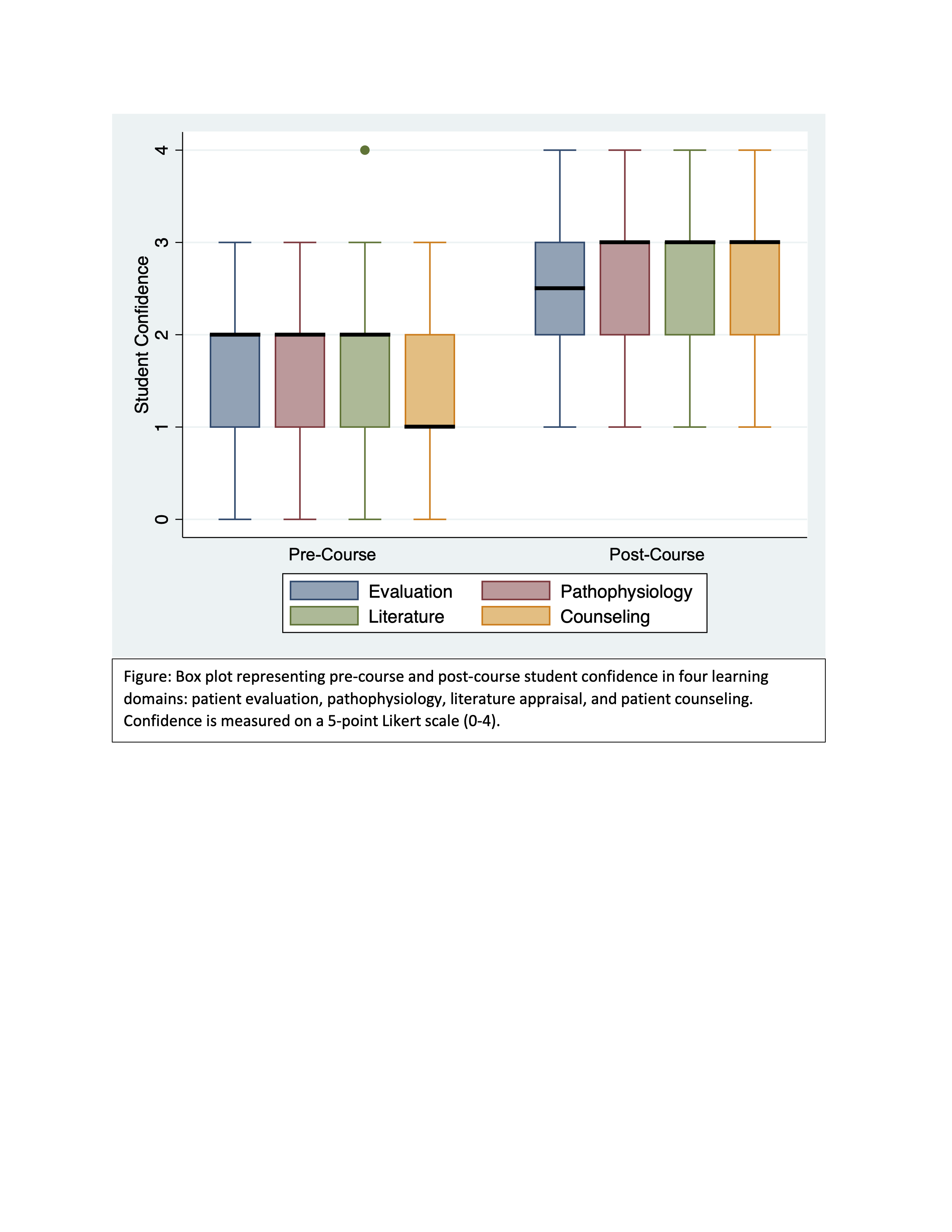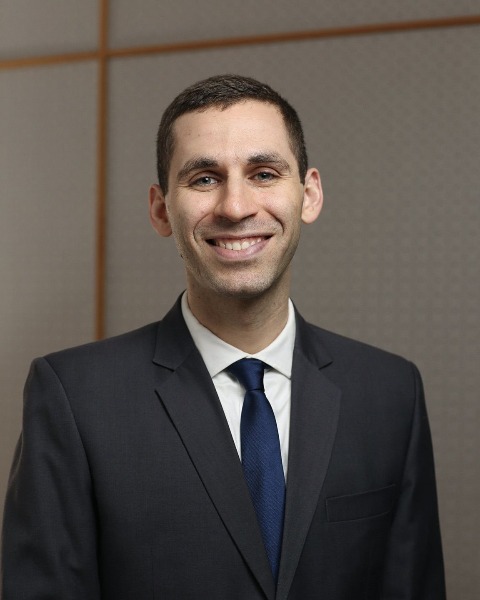Back
Introduction: Virtual learning tools have an increasingly important role in urologic education. We aimed to develop and evaluate a virtual urology course for medical students preparing for subinternships.
Methods: We created a curriculum of online case-based urology modules using the Canvas platform (Instructure, Salt Lake City, UT) with sections on urinary incontinence, kidney stones, bladder cancer, prostate cancer, erectile dysfunction, hematuria, and vesicoureteral reflux. In May 2022, we offered a 4-week virtual urology course to medical students at institutions across the country. Students and faculty engaged in asynchronous dialogue on discussion boards and live discussion on a videoconference platform. The course also offered networking opportunities and a panel to discuss preparation for subinternships. Students completed anonymous pre-course and post-course surveys assessing confidence in patient evaluation, pathophysiology, literature appraisal, and patient counseling. Surveys also assessed confidence in content knowledge related to each disease process. Outcomes were scored on a 5-point Likert scale and were compared using Wilcoxon signed-rank tests.
Results: The course included 72 students from 31 institutions. Thirty students (42%) completed both the pre-course and post-course surveys. Median confidence scores increased across all four learning domains (Figure): patient evaluation (2.5 vs. 2), pathophysiology (3 vs. 2), literature appraisal (3 vs. 2), and patient counseling (3 vs. 1) (all p<0.001). Median confidence in content knowledge increased across all topics: urinary incontinence (3 vs. 2), kidney stones (3 vs. 2), bladder cancer (3 vs. 1), prostate cancer (3 vs. 1), erectile dysfunction (2.5 vs. 1), hematuria (3 vs. 2), and vesicoureteral reflux (3 vs. 1) (all p<0.001). Overall, 24/30 students (80%) rated the course "excellent" or "very good," and 28/30 students (93%) "strongly agree" or "somewhat agree" that the course was effective in preparing for subinternships.
Conclusions: A multi-institutional virtual urology course for medical students improved confidence across learning domains and improved content knowledge across multiple disease processes. This course was widely accessible, highly rated, and effective in preparing students for urology subinternships. SOURCE OF
Funding: Society of Academic Urologists

Podium Session
Session: PD30: Education Research II
PD30-12: Efficacy of a Multi-Institutional Virtual Urology Course for Medical Students: Student Perspectives
Sunday, April 30, 2023
11:20 AM – 11:30 AM CST
Location: S502

Ezra J. Margolin, MD
Columbia University
Podium Presenter(s)
Introduction: Virtual learning tools have an increasingly important role in urologic education. We aimed to develop and evaluate a virtual urology course for medical students preparing for subinternships.
Methods: We created a curriculum of online case-based urology modules using the Canvas platform (Instructure, Salt Lake City, UT) with sections on urinary incontinence, kidney stones, bladder cancer, prostate cancer, erectile dysfunction, hematuria, and vesicoureteral reflux. In May 2022, we offered a 4-week virtual urology course to medical students at institutions across the country. Students and faculty engaged in asynchronous dialogue on discussion boards and live discussion on a videoconference platform. The course also offered networking opportunities and a panel to discuss preparation for subinternships. Students completed anonymous pre-course and post-course surveys assessing confidence in patient evaluation, pathophysiology, literature appraisal, and patient counseling. Surveys also assessed confidence in content knowledge related to each disease process. Outcomes were scored on a 5-point Likert scale and were compared using Wilcoxon signed-rank tests.
Results: The course included 72 students from 31 institutions. Thirty students (42%) completed both the pre-course and post-course surveys. Median confidence scores increased across all four learning domains (Figure): patient evaluation (2.5 vs. 2), pathophysiology (3 vs. 2), literature appraisal (3 vs. 2), and patient counseling (3 vs. 1) (all p<0.001). Median confidence in content knowledge increased across all topics: urinary incontinence (3 vs. 2), kidney stones (3 vs. 2), bladder cancer (3 vs. 1), prostate cancer (3 vs. 1), erectile dysfunction (2.5 vs. 1), hematuria (3 vs. 2), and vesicoureteral reflux (3 vs. 1) (all p<0.001). Overall, 24/30 students (80%) rated the course "excellent" or "very good," and 28/30 students (93%) "strongly agree" or "somewhat agree" that the course was effective in preparing for subinternships.
Conclusions: A multi-institutional virtual urology course for medical students improved confidence across learning domains and improved content knowledge across multiple disease processes. This course was widely accessible, highly rated, and effective in preparing students for urology subinternships. SOURCE OF
Funding: Society of Academic Urologists

